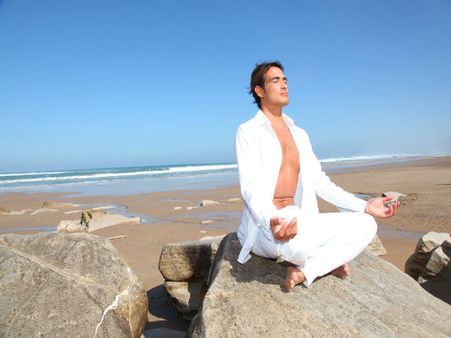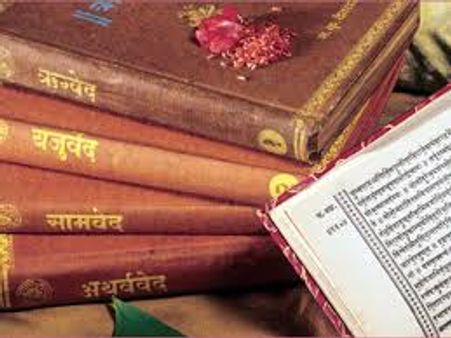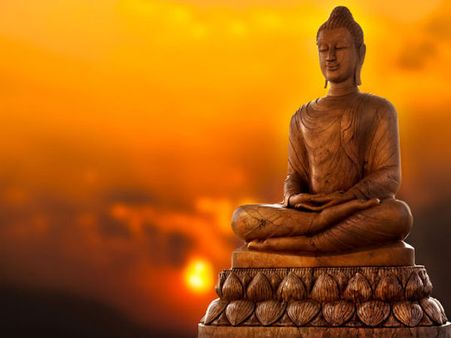Just In
- 53 min ago

- 10 hrs ago

- 11 hrs ago

- 15 hrs ago

Don't Miss
- Sports
 IPL 2024: List Of Captains To Score Century In History Of The Tournament; Ruturaj Gaikwad Becomes Latest Addition
IPL 2024: List Of Captains To Score Century In History Of The Tournament; Ruturaj Gaikwad Becomes Latest Addition - Finance
 2 Multibagger Defence To Shield Your Money, Buy On April 24; Prabhudas Sets Target Prices, Stop Loss
2 Multibagger Defence To Shield Your Money, Buy On April 24; Prabhudas Sets Target Prices, Stop Loss - Technology
 Apple Confirms Special Event for May 7: iPad Air, iPad Pro 2024 Models Expected
Apple Confirms Special Event for May 7: iPad Air, iPad Pro 2024 Models Expected - News
 Senator Lambie Calls For Elon Musk's Imprisonment Over Wakeley Church Stabbing Posts
Senator Lambie Calls For Elon Musk's Imprisonment Over Wakeley Church Stabbing Posts - Movies
 Mirzapur 3 OTT Release Date, Platform: When Will Mirzapur Season 3 Premiere On Amazon Prime Video?
Mirzapur 3 OTT Release Date, Platform: When Will Mirzapur Season 3 Premiere On Amazon Prime Video? - Education
 Telangana Inter Manabadi 1st and 2nd Year Results 2024 to be Declared Tomorrow
Telangana Inter Manabadi 1st and 2nd Year Results 2024 to be Declared Tomorrow - Automobiles
 Chrysler Pacifica Marks Seven Years As Most Awarded Minivan With New Campaign
Chrysler Pacifica Marks Seven Years As Most Awarded Minivan With New Campaign - Travel
Kurnool's Hidden Gems: A Guide To Exploring India's Lesser-Known Treasures
The Four Stages Of Life According To Hinduism
These are the four stages of Life in Hinduism.
Hinduism is one of the biggest religions in the world. It is the oldest religion in the world and the third largest after Christianity and Islam. According to the Hindu books on religion and life, there are four basic stages of life. The stages are also known as Ashrama in Sanskrit. These are:
1.
Brahmacharya
2.
Grihastha
3.
Vanaprastha
4.
Sanyasa

All these stages of life are related to the four goals of life, the main goal being the attainment of knowledge. Here we give the detailed information about what are the four stages of life.

Brahmacharya
Brahmacharya refers to the student age where a person is to supposed to focus on learning everything as a student. The aim of this stage of life is the development of the body, mind, and the intellect. Brahmacharya is the Sanskrit word for celibacy. Celibacy has to be followed while this stage of life goes on. While these days, it is known as the student life and or bachelorhood, in the ancient days the child was made to stay with the Guru throughout the stage of Brahmacharya and acquire all forms of learning. The student was also supposed to work and earn something that could be paid to the teacher as Dakshina. The ideal age limit for this stage was that of 24 years.

Grihastha
This stage referred to the time when the individual would get married and become a Grihastha. Grihastha has been taken from the word ‘Grih' a Sanskrit word which translates to house. So the Grihastha is the householder. With this stage of life come the responsibilities associated with marriage and family. One is supposed to perform all the duties towards one's parents and family, by earning money and means of livelihood, adopting Dharma as the way of life. This is also categorised as the time when the life of the individual includes the most social, occupational, physical and emotional attachments. The time period for this stage of life is from 24 to 48.

Vanaprastha
Often also referred to as the transition stage, Vanaprastha refers to that time when a person hands over his family duties to the next generation and retires from them. He takes up an advisory role and is supposed to practice spirituality. His goals become even higher which involve renouncing from the life of a householder and materialism and moving towards spiritual enlightenment. This stage encompasses the age between 48 and 72 years.

Sanyasa
Sanyasa marks that stage of life in which one detaches oneself from all the material desires as well. While Vanaprastha refers just to the renunciation from the responsibilities, Sanyasa refers to the renunciation of all forms of property and detachment from the desires associated. An individual generally should take up the life of a hermit, to be ideally called a Sanyasi. However, the Sanyasa stage can be entered even after completing the Brahmacharya. Otherwise, he is called a Sanyasi only after he completes the age of 72 years.
-
 yoga spiritualityThrissur Pooram 2024: Date, Time, History, Significance, And Celebrations Related To Kerala's Rich Traditions
yoga spiritualityThrissur Pooram 2024: Date, Time, History, Significance, And Celebrations Related To Kerala's Rich Traditions -
 yoga spiritualityKamada Ekadashi 2024 Wishes: Greetings, Messages, Texts, Images, Twitter Status And Instagram Captions
yoga spiritualityKamada Ekadashi 2024 Wishes: Greetings, Messages, Texts, Images, Twitter Status And Instagram Captions -
 yoga spiritualityChaitra Navratri 2024 Day 9: Maa Siddhidatri Puja Vidhi, Vrat Katha, Mantra, And Aarti Lyrics
yoga spiritualityChaitra Navratri 2024 Day 9: Maa Siddhidatri Puja Vidhi, Vrat Katha, Mantra, And Aarti Lyrics -
 yoga spiritualityKamada Ekadashi 2024 Mantras To Chant On This Auspicious Day To Fulfill Desires
yoga spiritualityKamada Ekadashi 2024 Mantras To Chant On This Auspicious Day To Fulfill Desires -
 yoga spiritualityChaitra Navratri 2024 Day 8: Maa Mahagauri Puja Vidhi, Vrat Katha, Mantra, And Aarti Lyrics
yoga spiritualityChaitra Navratri 2024 Day 8: Maa Mahagauri Puja Vidhi, Vrat Katha, Mantra, And Aarti Lyrics -
 yoga spiritualityChaitra Durga Ashtami 2024 Wishes, Greetings, Messages, Images, Posters, Twitter, And Instagram Status
yoga spiritualityChaitra Durga Ashtami 2024 Wishes, Greetings, Messages, Images, Posters, Twitter, And Instagram Status -
 astrologyRam Navami 2024: Lucky Zodiac Signs Who Will Get Special Blessings Of Lord Rama And Will Be More Fortunate
astrologyRam Navami 2024: Lucky Zodiac Signs Who Will Get Special Blessings Of Lord Rama And Will Be More Fortunate -
 yoga spiritualityWhen Is Kamada Ekadashi 2024? Confirmed Date, Puja Rituals, Why Fasting Is Significant On This Day
yoga spiritualityWhen Is Kamada Ekadashi 2024? Confirmed Date, Puja Rituals, Why Fasting Is Significant On This Day -
 yoga spiritualityChaitra Navratri 2024 Day 7: Maa Kalratri Puja Vidhi, Vrat Katha, Mantra and Aarti Lyrics
yoga spiritualityChaitra Navratri 2024 Day 7: Maa Kalratri Puja Vidhi, Vrat Katha, Mantra and Aarti Lyrics -
 yoga spiritualityChaitra Navratri 2024 Day 6: Maa Katyayani Puja Vidhi, Vrat Katha, Mantra and Aarti Lyrics
yoga spiritualityChaitra Navratri 2024 Day 6: Maa Katyayani Puja Vidhi, Vrat Katha, Mantra and Aarti Lyrics -
 yoga spiritualityChaiti Chhath Puja 2024 Wishes, Greetings, Texts, Messages, Images, WhatsApp, Twitter And Instagram Status
yoga spiritualityChaiti Chhath Puja 2024 Wishes, Greetings, Texts, Messages, Images, WhatsApp, Twitter And Instagram Status -
 yoga spiritualityChaitra Navratri 2024 Day 5: Maa Skandmata Puja Vidhi, Katha, Mantra And Aarti
yoga spiritualityChaitra Navratri 2024 Day 5: Maa Skandmata Puja Vidhi, Katha, Mantra And Aarti


 Click it and Unblock the Notifications
Click it and Unblock the Notifications




